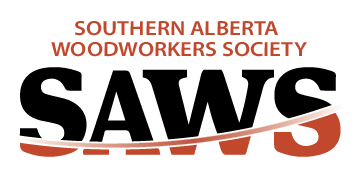Respect critical copyright, intellectual property in SAWS.ca writing
One question that has come early in the writing of SAWS blog articles is what is considered acceptable in referencing material from other sources in articles on SAWS.ca. This is a broad area and there are varying opinions on how to reference designs, plans, tools, and services in the context of growing our woodworking skills and enjoyment.
SAWS does not have a team of legal experts so we have pulled together a framework to guide this writing based on generally accepted principles in the communications world and the related experience of SAWS members. This will be a continually evolving descriptive as we grow SAWS.ca.
Here’s a general overview of how to reference existing materials.
Personal versus SAWS’ opinion. Most writing on the SAWS.ca website will be considered the personal opinion of the writer and may not represent an official position of SAWS. This statement will be clearly present on the website.
Note this does not mean writers can say anything they want, it’s just a point of clarification that SAWS.ca is a discussion community that includes official SAWS materials.
Original material. SAWS.ca is interested in producing original material, so widespread reproduction of existing material is not acceptable on this blog or training area. However, if as part of the description of the work you are completing you have information that you consider of value to readers, it is acceptable to explain the role of existing content in completing your work.
Assume copyright, use respect. Simplest way to reference material is to assume it is copyrighted. So, reference the source if you are using it to explain a personal perspective. If you do not know the source of the image or wording you wish to copy, do not use the image or content.
Also, while copying design for your own personal use is likely not an issue, encouraging broader use of copyrighted plans or designs by repeating or reproducing them is not respectful or acceptable. If you want to use an image or content from a source, SAWS requires you to have written permission from that source to use it. That express written permission (letter or email) needs to be provided to SAWS along with the article.
Use respect. Treat others the way you would like to be treated. If you have a negative comment about a product or service and wish to explain that in the context of your work, that is likely acceptable if handled properly. But rants, mini or lengthy about particular brands, tools or services are not acceptable. Calling a product “crap” may work over a beer with friends but it is not respectful in the permanent world of the Internet so don’t do it.
How to use links. Links to existing material are acceptable. But the web is a fast-moving environment and links change quickly. So rather than just using a hard link, add some descriptive that explains what is at the link you want people to access. That way if the link does not work, readers have enough general information to search and find related materials.
Product or service reviews generally not acceptable. Generally, reviews of products or services are not what we are aiming for on the SAWS.ca website and blog. That is done extensively elsewhere online. If in the process of explaining work you are doing you have a comment on the features of a tool or service you found valuable, it is acceptable to mention that. But full-on product reviews or unboxing of new tools articles are not acceptable.
Opinion of SAWS.ca management is final. We try and head off differences of opinion by encouraging discussion ahead of production of materials. If there is a dispute, SAWS will call on a randomly selected group of members to provide a “Council of elders” opinion on the matter. Their decision is final.
The goal of SAWS.ca is a respectful, useful discussion community on woodworking. Let’s keep it that way by respecting others in our broad community.

